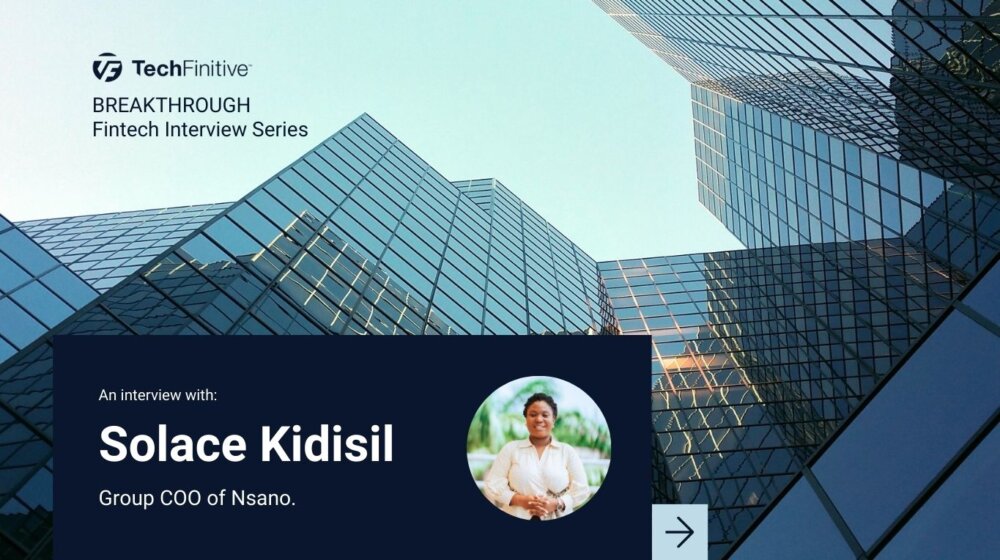
It’s not completely crazy to believe in the Metaverse
It’s been a bad few weeks for the Metaverse.
No, the machines haven’t yet figured out how to use us as meat-batteries while keeping our brains locked inside an illusory universe. At least, as far we know.
But across Silicon Valley, the coders, designers and product managers working on the technologies that will supposedly one day plug us into ‘the Metaverse’ have been jolted back to reality. They’ve been sent packing by the likes of Microsoft, Google and Meta, all of whom have announced swingeing job cuts in response to macroeconomic conditions.
And it appears that much of the pain fell on big tech’s most speculative ventures. For example, Microsoft is cutting ten thousand jobs – and the HoloLens division is one of worst affected, with entire teams inside the division being culled.
In short, the mood music for what is oft-talked about as a future world-changing technology is not good. Business Insider called the layoffs a “nail in the coffin for whatever the Metaverse is”.
So you could be forgiven for thinking it is time to throw our VR headsets on to the scrapheap of history, alongside our 3D televisions, Quibi subscriptions and our Bored Apes.
And as someone who is chronically online, and enjoys the validation of my professional peers, I badly want to join in with the Metaverse dunking. After all, it’s what all of the cool kids on Twitter do. Remember how we enjoyed Mark Zuckerberg announcing “We have legs!”?
But unfortunately… I can’t, because secretly, deep-down, I’m a little bit of a believer, and despite everything, I think that there really could be something in the Metaverse.
Surfing the Metaverse
Back during lockdown in 2020, I decided to face the crisis head on and dedicate the unexpected break from work and routine to bettering myself with clean living, regular exercise, and a mindful appreciation of our finite time on this Earth.
By which I mean, I spent a lot of time playing video-games and somehow managed to let myself go even more.
But there was one bright spot. Eager to reconnect with distant friends and relatives, I managed to persuade my Canadian partner’s brother and his wife, who were stuck multiple oceans away from us in New Zealand[1], to download a game that all the kids were playing, called Fortnite.
Quickly, a new ritual emerged. For months, almost every evening our band of 30-and-40-somethings found ourselves firing up our Playstations to play the game. My friend Blakeley, who lives in Oxford, joined us too, and together our squad found ourselves more entangled in each others’ lives than we had even when travel was possible.
What quickly became apparent wasn’t that Fortnite is a uniquely compelling game, but that it functioned as an excuse for us to hang out. Just like how men won’t phone each other for a chat – but might go fishing together, or join a sports team, the game’s purpose wasn’t to win, but was to act as an excuse to spend time with other people.
We played – and to this day we continue to play – for hours at a time. And as we play, the structure of the game facilitates this social function:
There are periods of high intensity, such as when we encounter an enemy team, when we have to focus on the game at hand, barking warnings and tactics at each other. There are also periods of low intensity, when our squad is exploring the virtual world together, when we can talk about, well, non-Fortnite stuff.
But what really marks out the social experience of Fortnite from other forms of communication is that there are even periods of almost complete silence, that if we were just on the phone or Zoom would be awkward and weird.
And it is in these silences where I see the most potential in the big idea of “The Metaverse”.
I think it’s likely that the Metaverse’s true value lies not in high-intensity experiences, where the prized quality is immersion. Because not everyone wants to experience the Normandy landings as if they were really there, with loud explosions and bullets whistling past their heads. But in facilitating these more low-intensity moments.
By this I mean the Metaverse could be the ideal platform for the same sort-of ambient-togetherness as sitting in a shared living room with friends and family, or working in an office with other people, even if you’re all just quietly reading or tapping away at your own laptops, doing your own thing instead of explicitly interacting. It could satiate that very human need for belonging that there are so far no good digital analogues for.
I know what you’re thinking: But why the Metaverse? We already have video calls and for the last century we’ve been able to phone each other. I mean, I’ve literally just described how Fortnite created the feeling of togetherness, without the need for anyone to wear a stupid headset.
This is true, but I think that, if realised, the Metaverse could do it better.
What makes the ambience in Fortnite work is that we are sharing a space – even though it is virtual space. That’s what creates the feeling of togetherness. But Fortnite is still ultimately on a two-dimensional screen on the other side of your living room – and VR can make this shared space feel even more real.
So though the internet might have enabled us to communicate over long distances – it could be the Metaverse that actually makes us feel like we’re actually together.
The future of work

So far, I’ve only made half an argument. Even if you buy my argument that the Metaverse could create an enhanced sense of togetherness for its users, there needs to be a theory of change. Right now, only a tiny handful of people have tried Metaverse-adjacent technologies. And it is hard to feel together if you’re the only person in the room.
This is why if the Metaverse is going to happen, it’s going to need a compelling reason for people to try it out, otherwise it will face the same colony-collapse as Google Plus, Clubhouse or any of the other social apps that have long disappeared or fallen into obscurity.
So how will we end up inside the Metaverse? This is where I think Mark Zuckerberg might actually be right.
We know from the last few attempts to make virtual reality a thing that while it makes for some impressive, glorified tech demos (and maybe a handful of ultra-niche industrial use-cases), it doesn’t really stick.
Perhaps you’ve even tried Beat Saber or No Man’s Sky and thought “this is pretty neat”, and then returned to your normal, VR-headset free-life.
That’s why Zuckerberg’s bet is different. He’s betting that the initial entrypoint to the Metaverse will be via something we can’t avoid: Work.
When Zuck rebranded Facebook to Meta, the demo he chose to show off wasn’t an ultra-immersive action game, or another attempt at doing Second Life or Playstation Home. Instead, he focused on Horizon Workrooms.
This is essentially a meeting client. The idea is that instead of everyone logging on to Zoom or Teams with their webcam, it instead takes place in virtual space. Everyone is represented by an avatar (complete with legs, now they have been patched in), and there are various collaboration tools people can use together.
Crucially though, Workrooms does something that I hadn’t seen in VR before: Instead of attempting to train the user to use a fiddly new controller, once you strap on your headset, what you’re presented with is your actual computer on a virtual screen in front of you.
Sure, it’s not exactly as inspiring as the Holodeck on the Starship Enterprise, but what’s smart about this approach is that you don’t have to get your head around a new user-experience paradigm to use VR – because you already know how to use your computer.
What could make this attractive to users is that the Metaverse experience builds on top of this familiar setup incrementally: Instead of restricting your computer to the small monitor you have on your desk, you can increase the virtual screen to be however large you need it. Or you can add extra screens if you need them.
I think this could be an immediately compelling prospect, especially if you don’t have the luxury of, for example, a home office of your own to work from (I think it was Ben Thompson who wrote that one benefits of VR could be that it enables you to tune out screaming children and other household disruptions so you can work).
And once you layer on top of this the social aspects I touched upon above, then I think that working inside the Metaverse could recreate the best parts of working in an office – the collaborative atmosphere, ease of communication with colleagues, and being with people – with the best part of working from home: Not having to actually be there.
If it’s hard to picture now, I thought this video, from YouTuber Pete Matheson, made for a really striking glimpse of what the future could look like:
So if applications can be proven to be robust and conducive to work productivity, I think this could be the catalyst needed to make the Metaverse happen[2].
Once enough people start spending time in VR for work, the Metaverse will enter a virtuous cycle. Instead of taking off your headset to join a Zoom call, we could reach a tipping point where it will be more convenient to hold the call inside VR – because you’re both already wearing a headset.
It’s not a concept problem – it’s a technology problem that can be solved
Perhaps the strongest argument against the Metaverse ever becoming something real is, well, look at it.
First, there’s the weirdness problem. It feels weird to wear a computer on your face. But I’m not convinced this view will endure over time. Remember how we all thought that Airpods looked silly? And today we wouldn’t even blink if we were to see Jacob Rees Mogg recording a TikTok dance. Everything new feels stupid right up until the moment where it doesn’t.
But more substantially the problem is that as the Metaverse currently stands, it’s all a bit, well, crap.
Take Meta’s Quest Pro headset – at £1,500, it is very much at the high-end of the market, and is arguably the best VR headset available on the market. But when The Verge’s staff tried it out, they utterly eviscerated it, complaining of buggy software, broken apps and a thoroughly unimpressive experience.
This criticism is hardly unusual. There has yet to be a truly impressive Metaverse experience – we’re still waiting for an ‘iPhone moment’ that proves the Metaverse is more than just hype.
But I don’t think this is evidence that the Metaverse is doomed to failure. The fundamental concept of the Metaverse, to the extent that a coherent definition exists, has not yet been discredited – the problem has been software engineering, which is a problem that can be fixed.
For example, one of The Verge’s criticisms was that avatars misalign on the screen at various points. Now, making two players appear in virtual space and having their movements correspond and interact correctly with their surroundings is not a trivial software engineering problem – but it is one that has been solved by pretty much every online game you’ve ever played. Meta’s problem isn’t a fundamental technology issue, but is one of resources and testing[3].
Similarly, on the hardware side, what’s on the market today has been lacking, with problems like a narrow field of view or low-resolution screens. But again, these feel like problems that will be solved incrementally.
I suspect we’re currently in a similar place to smartphones in, say, 2005. Phones had internet connections, they had cameras, they had apps – but we had to wait for Steve Jobs to elegantly package all of this functionality together before they actually took off. And I’m sure that when Apple finally launches its much-rumoured VR headset, it will force sceptics to at least take another look at the technology[4].
But, of course, I could always turn out to be hilariously wrong. Perhaps this piece will age just as terribly as when I was secretly actually pretty optimistic about Elon Musk’s takeover of Twitter.
And to be clear, I still consider myself pretty sceptical of the much more expansive definition of ‘The Metaverse’, which imagines a Matrix-like 3D world that isn’t controlled by any one company, where the blockchain is used to denote possessions and where 3D objects can seamlessly move between experiences.
But for the reasons set out above, I just can’t persuade myself to completely dismiss the idea completely. Focused relatively narrowly on VR, work and social experiences, I think there could, in the not-too-distant future, be a compelling use case there. And that perhaps the Metaverse really could bring us closer together.
So maybe this time next year, when we’re all plugged into our Apple headsets, I’ll meet you on the battlefields of VR Fortnite, and remind you that I was right.
[1] (They are a complicated family.)
[2] I suspect the rollout of the Metaverse/VR will look more like the rollout of electric vehicles than, say, smartphones: Corporations with large fleets/large numbers of employees, receiving top-down mandates to use the new tools, which then enables the tools to be scaled – to the benefit of everyone, not just the employees of the company.
[3] If you’ve played video games over the last several decades, something that is striking about modern games is that even the bad ones display at least a base level of competence in terms of control and user experience that wasn’t always the case in years gone by. Part of the reason for this is due to how Unreal Engine has become almost a common platform for 3D games – and countless titles use it as the underlying engine to manage the in-game physics and other basics. And perhaps not entirely coincidentally, Unreal is made by Epic Games – which makes Fortnite, and is betting big on the Metaverse.
[4] I think the most interesting rumour about Apple’s headset is that users will control it through a familiar looking screen of apps. Like the expanded desktop, this too could ease people into VR – and once everyone is comfortable with VR, new interaction paradigms that don’t look like phones or real world offices can be more easily introduced.
NEXT UP

Slow buyers cause tech firms to rethink sales approaches as tough Q1 hits home
New research suggests tech sales were slow in Q1, with buyers of technology and professional services taking their time before committing to any solutions.

ByteDance says it has no plans to sell TikTok and refuses to bow to US pressure
ByteDance, the Chinese company that owns TikTok, stated that it “doesn’t have any plans to sell TikTok” on Toutiao, a social media platform that it also happens to own.

Solace Kidisil, Group COO of Nsano: “The difference between traditional finance and fintech is the questions we ask”
We interview Solace Kidisil, Group COO of Nsano, a fintech company from Ghana, offering digital payment solutions across Africa